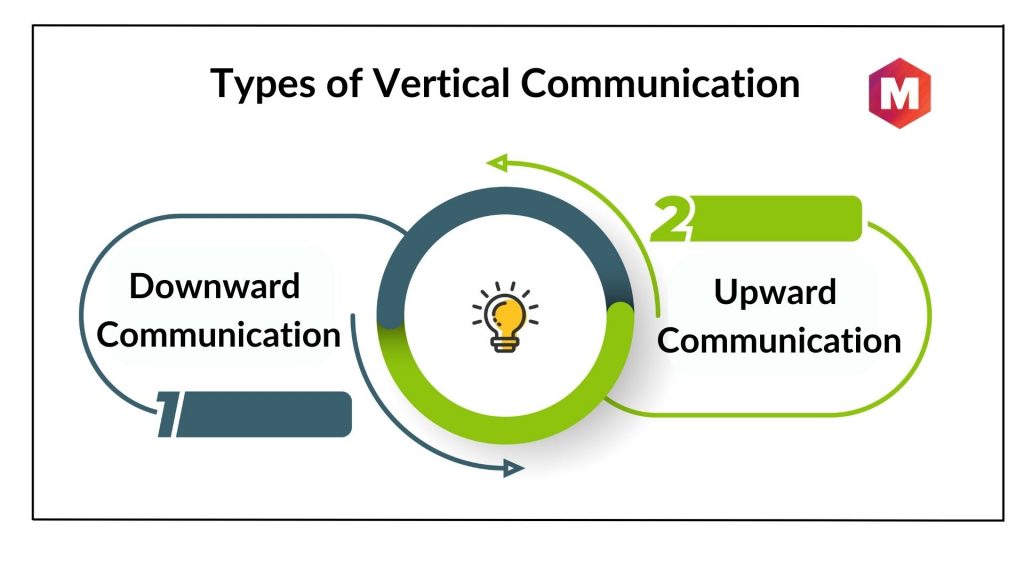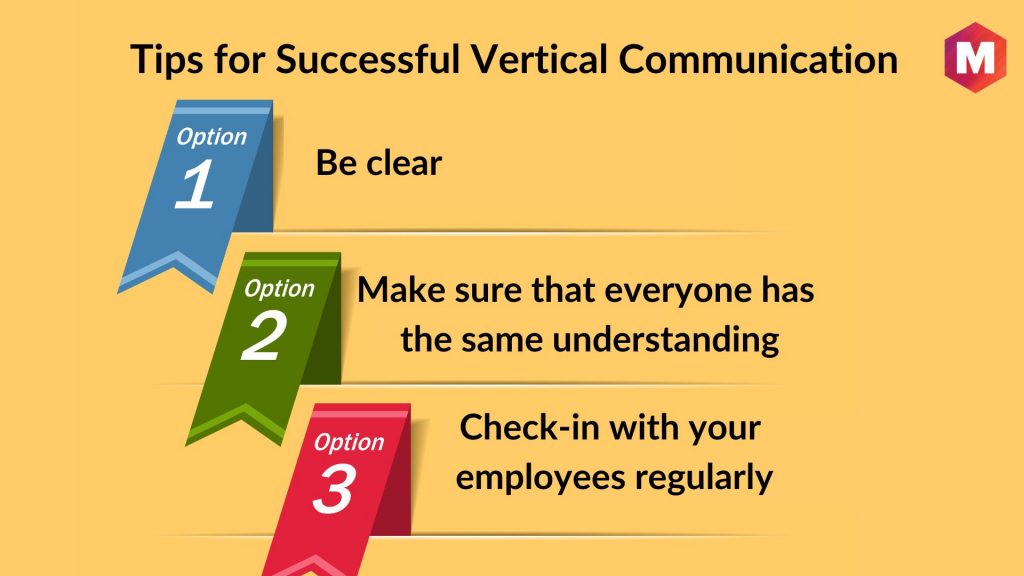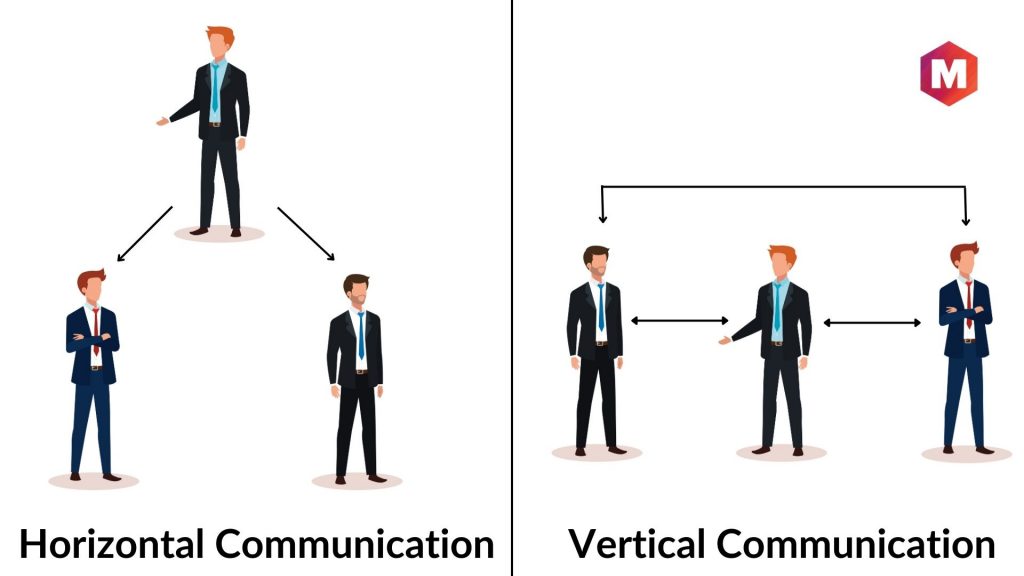
Understanding Vertical Communication: Types, Advantages, and Disadvantages Explained

Vertical communication is the exchange of information between individuals occupying different positions in a hierarchy It can take two forms: downward communication, where information flows from higher to lower levels, and upward communication, where information flows from lower to higher levels Successful vertical communication is essential for effective organizational functioning
Vertical communication is a mode of communication that takes place between two individuals holding different hierarchical positions within an organization. This type of communication follows a linear pattern, where information moves from one individual to the next based on their respective titles.
What is Vertical Communication?
Communication within an organization can take many forms, but one of the most important is vertical communication. This type of communication occurs between superiors and subordinates, and can flow both upwards and downwards. Examples of vertical communication include formal reports, business orders, work reports, and instructions. This type of communication can be both formal and informal, depending on the situation.
Types of Vertical Communication
These are the two types of vertical communication structure in business communication.
1. Downward Communication
Disseminating important information, providing clear instructions, outlining expectations, assigning tasks and responsibilities, and offering feedback and guidance. It is crucial for effective communication within an organization, as it ensures that everyone is on the same page and working towards the same goals. However, it is important for organizations to strike a balance between top-down communication and open communication channels, in order to promote transparency and collaboration.
Implementing new objectives and announcing them to the staff.
Explaining new organizational procedures to intern or new employees.
Socializing with the staff and building a friendly and cooperative atmosphere with them.
2. Upward Communication
Upward communication refers to the flow of information from associates or subordinates to senior management. This type of communication is crucial for employees to keep their supervisors or managers updated on their work or performance reports, as well as to share important information. One of the key purposes of upward communication is to inform senior management about the challenges and issues faced by staff members.
Suggesting changes to improve workflow and productivity.
Providing updates regarding results.
The leader should prioritize keeping an open mind when it comes to hearing out grievances and complaints from staff members. This means actively seeking out opinions, making decisions based on their suggestions, and paying attention to the overall mood and biases of the team. It's important to create an environment where everyone feels heard and valued.
Purpose of Vertical Communication
The purpose of vertical communication is to relay information from the top of an organization (the CEO, for example) down through its ranks and out to the public.
Large corporations often utilize a communication channel known as vertical communication to disseminate significant news or updates that pertain to all employees. This method is particularly effective in situations such as the appointment of a new CEO or the decision to restructure the company. However, small businesses can also benefit from vertical communication when launching a new product or transitioning management. Keeping all staff members informed allows for informed decision-making based on the latest information.
Tips for Successful Vertical Communication
Effective communication across all levels of your organization is vital. Whether you’re in charge of a team, supervising a project, or simply trying to achieve a goal, being able to convey your message clearly and succinctly is crucial. To ensure successful vertical communication, consider the following tips:
Ensure that your employees have a clear understanding of their responsibilities. Avoid assuming that they already know what is expected of them and take the time to explain any ambiguities to avoid confusion and errors. It is crucial that everyone is on the same page, as misunderstandings can lead to costly mistakes.
Check in with your team members on a regular basis to ensure everything is running smoothly and to identify any potential challenges that may need immediate attention to prevent them from escalating into more significant issues. For instance, you may want to ask, "Do you need any support to complete all your tasks within the given deadlines?"
Examples of Vertical Communication System
Implementing vertical communication systems can greatly enhance the productivity and synchronization of your organization. This is especially beneficial for larger corporations where it is crucial to maintain consistency among employees. Vertical communication systems can assist in managing employee training and disseminating information about new products, ideas, or services.
For instance, in a large company with numerous departments, each with distinct priorities, tasks, and objectives, it is imperative for every individual to have access to information pertaining to other departments. This facilitates better tracking of tasks and deadlines, ensuring that everyone is on the same page. Moreover, it enables employees to have a comprehensive understanding of how new products or services will affect their work, thereby allowing them to make necessary adjustments to their work processes.
A well-planned vertical communication strategy is not only beneficial for larger organizations with multiple locations or stores, but it can also ensure that all employees have access to consistent information, preventing confusion and misunderstandings between different branches or locations.
Advantages of Vertical Communications
The right way of conveying messages – It helps to convey messages effectively from the top-level management to the bottom-level management or vice versa.
Facilitates effective communication between different levels of the organization – By establishing a clear chain of command, this system enables smooth communication between superiors and subordinates, ensuring that information is conveyed accurately and efficiently. Additionally, it helps build trust and fosters a sense of accountability and responsibility amongst team members.
Newcomers and interns can easily understand company policies with simplified explanations provided by top-level management. Vertical Communication streamlines the collection of work reports and feedback, enabling senior associates and supervisors to make informed decisions more easily.
Delegating tasks effectively - By using this communication method, tasks can be assigned to staff members without overwhelming a few individuals with too much responsibility.
Clear communication - Direct communication between top-level management and supervisors eliminates any miscommunication or confusion regarding messages.
Confidentiality is prioritized - Top-level management can selectively share sensitive information with individual supervisors rather than broadcasting it to the entire organization.
Encourages organizational structure - Reporting to respective superiors fosters respect and ensures that everyone is aware of their respective roles and responsibilities.
Disadvantages of Vertical Communication
Vertical communication may cause employees to become too complacent, as they may operate under the belief that their work will be checked and corrected before finalization.
The tone and body language of the sender could lead to misunderstandings and disagreements.
Employees lower down the hierarchy may feel overlooked due to a significant gap between top management and lower-level staff.
Rewritten fragment: This approach can be time-consuming and potentially lead to project delays, which can ultimately hinder productivity and impact on meeting deadlines. It's essential for the staff to have a deep respect for top-level management, as a breach in the chain of command can disrupt the organization's disciplinary measures and reputation.
When information is relayed over a prolonged period, it runs the risk of getting distorted before reaching the higher-ups. This inefficiency can, in turn, negatively impact the rapport between supervisors and their subordinates.
There is a tendency for the board of management and the supervisors to neglect the subordinates due to the chain of hierarchy.
Horizontal Communication vs Vertical Communication
Vertical communication is a crucial aspect of any company's success. It ensures that information is transmitted accurately and efficiently throughout the organization's hierarchy. By establishing clear lines of communication, leaders can make informed decisions, employees can feel heard and valued, and the overall productivity of the company can be improved.
The passing of information from one employee to another, moving upwards in the hierarchy of command, is known as vertical communication. This type of communication is formal and official, as it adheres to the established authority structure. It involves communication between bosses and their subordinates, and vice presidents and presidents. On the other hand, horizontal communication is when employees communicate with one another based on their shared interests or goals. In this type of communication, all individuals working towards a common goal are considered equal partners, allowing for open discussion without the concern of authority levels.
Creating a workplace environment where individuals feel respected and appreciated is crucial in promoting teamwork and achieving common objectives. Horizontal communication is a vital component in establishing an inclusive business culture.
Conclusion
Vertical communication is a crucial aspect that takes into account the hierarchical structure of individuals within the organization. By establishing a chain of command, it aims to promote discipline and enhance efficiency. Both upward and downward communication play a significant role in facilitating this vertical communication in the organization.
What are your thoughts about the effectiveness of this type of communication? Share your opinion and share information with us in the comment section below.













